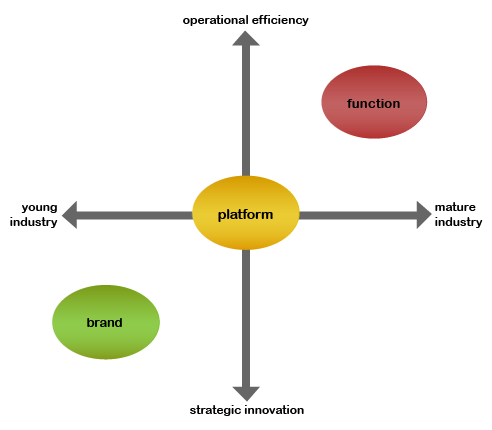 How to organize your online business team around the content
How to organize your online business team around the content
Organizing an online business team isn’t an exact science. In fact, when it comes down to laying out a generic standard for online team management, we’ve found it simply isn’t possible. There are many successful publishers running their businesses in different ways. What we have discovered after interviewing and analyzing the industry are four specific types of organizational strategies used by publishers today.
When publishing companies have fewer products to manage that are typically in one platform (like print), it makes sense to organize by function –- editorial, circulation, advertising, production and finance. After all, that’s how we’ve been doing it for years, right? But in a multiplatform world, that paradigm falls apart.
For many companies, it now makes more sense to organize by platform, where you can put one manager in charge of each individual product platform. And while there is no one, perfect organizational structure or set of job descriptions for a multiplatform publishing business, we do see a pattern for online team management that is best described as “organizing activities around the content.”
[text_ad]
Functional Organization
The basic functional organization is overseen by a CEO who has five (or more) basic functional teams underneath him. This is the classic print model that we see very often converted for online. This organizational strategy is common in older businesses who are looking to expand more but cut costs.
The five functions of this online business team may include: editorial, circulation, advertising, production and finance.
Platform Organization
As publishing companies evolve, many publishing companies we’ve seen grow into a team that is structured by the platform they’re publishing on. In this case, the teams still report to a CEO, but each platform requires “specialist” with a special skill set for media production and distribution of that platform. At the same time, expertise is shared across all platforms, whether it be cooking, investing, knitting or any other myriad of subjects that the company covers.
The five functions of this online business team may include: magazine publishing, book publishing, online publishing, tv & video and live events.
Brand Organization
This may also be called “Audience Organization. In this organizational structure, the teams are set up at the brand or audience level so that a market would be corresponding to a given brand. For example, a company may have many magazines, but each may have its own brand. Or, they may have magazines on different topics, where the topic is the brand. It all depends on how you’ve branded your publications.
The five units in this online business team would look something like: Brand A, Brand B, Brand C, Brand D, Brand E.
Hybrid Organization
We see the hybrid organization most often in this rapidly changing online atmosphere. From what we’ve discovered, companies that are reaching across multiple markets on multiple platforms use this model most often.
In this organization, things like “finance” may be run as a functional unit, while “events” and “book publishing” could be run as platform units. Then, they might maintain three brand groups where there is a brand champion in charge of each that is responsible for developing and marketing that brand.
[text_ad]
Choosing between these four organizational structures often depends on the age of the business.
Older companies who are looking to expand and cut costs will often organize by function. Operations that are mid-life will often choose to operate by platform as the most efficient way to get business done. Young organizations that are innovating and growing rapidly often choose an audience-centric brand strategy. Companies that are developing on many levels often resort to a hybrid model that works for them.
People.com Success Story:
During a 12-month period that corresponds to the organizational restructuring from function-based to platform-based, People.com grew dramatically—from about 200,000 unique visitors per month to more than 13 million today.
The website is no longer considered a companion to the corresponding magazine. The magazine editor and online editor are now peers, and the website is considered a destination product in its own right.
Do you staff your online business team differently? Share your thoughts with us and our readers in the comments!




Glad to hear that! We also have another tip on this topic:
Job Descriptions for Managers – 6 Online Publishing Jobs